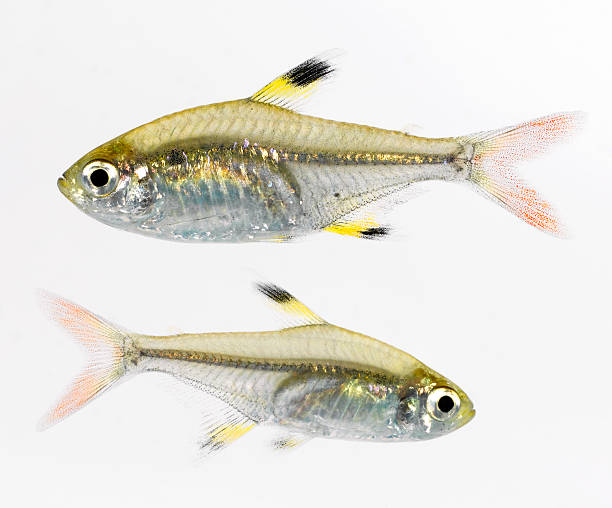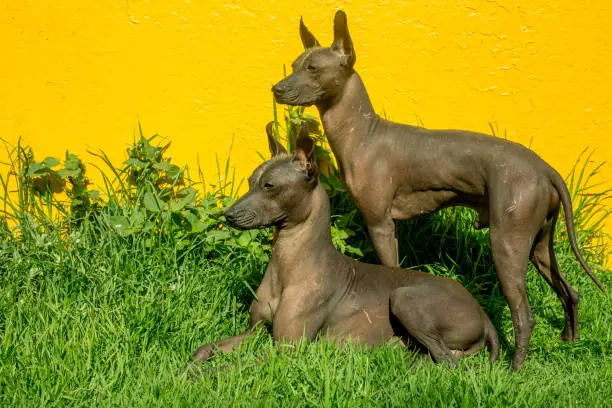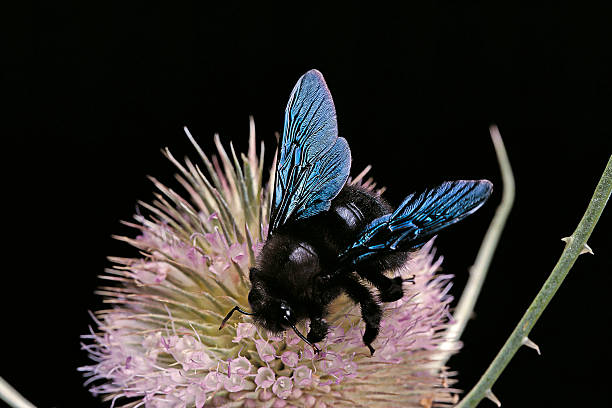Helpful Guides on each Category

Are you curious about animals that start with X? This is a tough letter for animal names, as there are not very many but, there are fascinating ones out there.
Whether you’re in a crossword puzzle clue or a game of trivia, desperately racking your brain for “what animal starts with X” or searching for a list of “animals beginning with X, this list is for you.
From the exotic X-ray Tetra to the unique Xenopus, the animal kingdom has some interesting species that start with this elusive letter.
Below are 23 existing animals that start with X with some fun facts on each!
What Animal Starts with the X?
- X-Ray Tetra
- Xenops
- Xerus (African ground squirrel)
- Xenopus
- Xenicidae
- Xoloitzcuintli
- Xenarthra
- Xanthic Sargo
- Xantusia
- Xeme
- Xenopeltis
- Xingu River Ray
- Xylotrupes (Rhinoceros beetles)
- Xenocyprididae
- Xylocopa (carpenter bees)
- Xylophagidae
- Xylomyidae
- Xylota
- Xucaneb Robber Frog
X-Ray Tetra

The X-Ray Tetra (Pristella maxillaris), also known as the Golden Pristella Tetra or Water Goldfinch, is a small freshwater fish native to the Amazon River basin in South America. They are named for their translucent bodies, which allow their internal organs and skeleton to be somewhat visible, like an X-ray.
These small, schooling fish typically reach lengths of around 1.5 to 2 inches (3.8 to 5 centimetres) and have elongated, silver bodies adorned with a horizontal black stripe that runs from the tip of their snout to the base of their tail.
In the wild, X-ray tetras are commonly found in slow-moving or stagnant waters with dense vegetation, where they feed on small invertebrates, algae, and organic detritus.
Xenops
Xenops are small animals that start with x, are tropical birds native to the rainforests of Central and South America. Belonging to the family Furnariidae, these birds are known for their unique, woodpecker-like behaviour, despite being unrelated to woodpeckers.
Xenops have stout bodies, short tails, and strong bills which they use to forage for insects in tree bark.
Xerus

The Xerus, which everyone knows as the African ground squirrel, is a lively and social rodent found across the savannas and grasslands of Africa.
These energetic creatures are known for their burrowing habits, creating intricate tunnel systems to escape predators and harsh weather.
Xerus have slender bodies, bushy tails, and sharp claws that help them dig.
They live in colonies, showcasing a strong sense of community and cooperation. Their diet consists mainly of seeds, nuts, and vegetation, although they occasionally munch on insects.
Xenopus
These animals that start with X are also called the African clawed frog. It is an aquatic species native to sub-Saharan Africa. Its distinctive claws on the hind feet makes it popular, this frog is entirely adapted to life in water, using its claws to tear apart food and its powerful legs for swimming.
Xenopus frogs have smooth, slippery skin and flattened bodies that aid in their aquatic lifestyle. They are often used in scientific research due to their robust nature and easy breeding in captivity.
Xenicidae
Xenicidae, mostly called New Zealand wrens, are a unique family of small birds endemic to New Zealand. These diminutive birds are known for their charming appearance and remarkable agility.
With only a few surviving species, including the rifleman and the rock wren, Xenicidae are a testament to the distinctiveness of New Zealand’s avian fauna. They typically have slender bodies, short tails, and fine, pointed bills ideal for their insectivorous diet. New Zealand wrens are adapted to a variety of habitats, from dense forests to alpine regions.
Xoloitzcuintli

The Xoloitzcuintli, also known as the Mexican Hairless Dog, is an ancient and unique breed of Dog. Originating in Mexico, this breed is believed to have healing and mystical properties.
Xoloitzcuintlis come in three sizes—toy, miniature, and standard—and are either hairless or coated. The hairless variety has smooth, tough skin, that needs regular care to prevent sunburn and dryness.
These intelligent, loyal, and alert dogs make excellent companions and watchdogs. If you need a unique, historically rich, and hypoallergenic pet, consider Xoloitzcuintli.
Xenarthra
This is an interesting animal that starts with X. It is of placental mammals that includes armadillos, anteaters, and sloths.
Native to the Americas, these animals are distinguished by unique anatomical features, such as additional articulations in their vertebral joints.
This order is divided into two main suborders: Cingulata (armadillos) and Pilosa (anteaters and sloths). Armadillos are known for their distinctive armour-like shells, while anteaters have elongated snouts and tongues designed for consuming ants and termites.
Xanthic Sargo
The Xanthic Sargo, scientifically known as Anisotremus davidsoni, is a species of fish of the family Haemulidae, commonly referred to as grunts or sweetlips. Found in the Pacific Ocean along the coast of North America, from California to Baja California, these fish inhabit rocky reefs and kelp forests.
This fish has a yellowish-orange colouration, that makes it sought-after by divers and snorkelers.
Xanthic Sargos eat small invertebrates, algae, and organic detritus in their rocky habitats.
Xantusia
Xantusia is a genus of small, secretive reptiles (night lizards) native to the southwestern United States and Mexico. These lizards are unique for their nocturnal habits and preference for rocky crevices and desert habitats.
Night lizards have a distinctive appearance, with smooth scales, large eyes adapted for low-light conditions, and a relatively flat body. Unlike many other lizard species, they give birth to live young rather than laying eggs.
Xeme
The Xeme, also known as the Sabine’s Gull (Xema sabini), is a small, striking seabird. This gull has a unique, forked tail and striking black, white, and grey plumage that sets it apart from other gull species.
Xemes breed in the Arctic tundra and are known for their long migrations, travelling to the coasts of South America and Africa during the winter months. Their diet is solely small fish and invertebrates, which they catch by dipping into the water while flying.
Xemes are often seen in flocks, especially during migration.
Xenocyprididae
This is a family of freshwater fish commonly known as East Asian minnows or bitterlings. These small, colourful fish are native to East Asia and can be found in various freshwater habitats such as rivers, streams, and ponds.
There are around 160 different species of Xenocyprididae swimming around in rivers and lakes.
Some female bitterling species in this family deposit their eggs inside freshwater mussels, where male bitterlings then fertilize them.
Xenopeltis
Xenopeltis is a genus of non-venomous snakes native to Southeast Asia. They are also called sunbeam snakes because of their iridescent appearance when exposed to light.
Sunbeam snakes have glossy, smooth scales that reflect light in various colours, creating a stunning effect reminiscent of sunlight dancing on water.
These snakes live in humid forests, marshes, and agricultural areas, where they spend much of their time burrowing underground or hiding beneath vegetation.
Although sunbeam snakes are shy and nocturnal, they occasionally surface to hunt for rodents, frogs, and lizards.
Xingu River Ray
Another animal that starts with X. The Xingu River Ray (Potamotrygon leopoldi), is a species of freshwater stingray native to the Xingu River basin in Brazil.
With a disc-shaped body and a tail armed with venomous spines, they are found in sandy or muddy river bottoms, where they blend in seamlessly with their surroundings.
Xucaneb Robber Frog
The Xucaneb robber frog, scientifically known as Craugastor xucanebi, is an amphibian species native to the cloud forests of Alta Verapaz, Guatemala. This elusive frog was only recently discovered and described in 2019, making it a relatively new addition to the scientific community.
Named after the Xucaneb mountain range where it was found, these frogs have vibrant greenish-brown bodies with irregular dark markings and bright orange or yellow spots on their backs.
Xylotrupes

Xylotrupes is a genus of beetles known for their impressive size and distinctive appearance. These beetles belong to the Scarabaeidae family and are known as rhinoceros beetles due to the horn-like projection on the males’ heads.
With their robust bodies and striking colours, Xylotrupes beetles are a fascinating sight in the insect world.
Xylocopa

Xylocopa (carpenter bees) are insects in the genus Xylocopa within the family Apidae. These large, robust bees are renowned for their impressive size, striking appearance, and unique nesting behaviors.
Carpenter bees are widely distributed across the world, inhabiting various habitats, including forests, woodlands, and urban areas. Each female constructs and provisions her own nest, unlike social bees such as honeybees and bumblebees.
Carpenter bees excavate nesting tunnels in wooden structures, hence their name “carpenter” bees. Unlike termites or wood-boring beetles, carpenter bees do not consume wood for food; instead, they create galleries within the wood to serve as nesting sites.
Xylophagidae
Xylophagidae is a family of flies commonly known as “wood-maggot flies” or “sawflies.” These insects belong to the order Diptera and are distributed worldwide, although they are more commonly found in temperate regions.
The name “Xylophagidae” comes from the Greek words “xylon” meaning “wood” and “phagein” meaning “to eat”. The larvae of these flies are often found in decaying wood, where they feed on other insect larvae, or scavenge on decaying plant material.
Xylomyidae
Xylomyidae is a family of flies commonly referred to as “wood soldier flies.” belonging to the order Diptera.
Members of the Xylomyidae family are typically large flies with robust bodies and striking colouration, often featuring bold patterns of black, yellow, or orange. They are found in forested areas, where they feed on decaying organic matter, including wood debris and dead animals.
Xylota
Xylota is a genus of hoverflies belonging to the family Syrphidae, commonly known as flower flies or syrphid flies. They look a lot like bees and wasps, which serves as a form of protective mimicry.
This genus are widespread across various habitats, including gardens, meadows, and woodland areas, where they play important roles as pollinators and offer natural pest control by feeding on aphids and other small insects.




